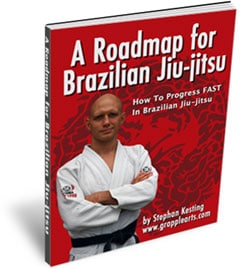Too often people forget about the bread-and-butter strategies that have been effective for decades and get seduced by the latest shiny technique.
Maybe there’s not a better example of something that has stood the test of time like the closed guard.
The closed guard has been controlling and submitting opponents with the gi, in no gi submission grappling, in MMA and self defense for a very long time.
Now it may seem like a relatively simple position; you just wrap your legs around your opponent and cross your ankles, right?
Not exactly…
There are a LOT of little, easy-to-miss details that are essential to making your closed guard an effective offensive position.
Today I want to highlight some of the key concepts and principles of the closed guard for you.
In the video below I show you some of the most important Closed Guard concepts and principles. If you incorporate these ideas into your training then I can guarantee that you’ll be off to a great start for the closed guard.
Here’s the video:
Here’s the executive summary of what’s in the video above:
- In closed guard your legs are typically locked around your opponent’s torso with your ankles crossed, but other variations (like climbing your legs over one of his shoulders) still count as closed guard.
- If your feet are dangling at your opponent’s hips then you’re NOT in the closed guard. This is easy to forget, especially if you’re battling for grips with your hands and arms…
- You need to control his posture using both your legs and your arms.
- Various grips can be used, including the classic sleeve and collar grip, sleeve and pant grip, overhooks, underhooks, etc.
- Breaking his posture is important for winning both BJJ and submission grappling matches. However it also makes it MUCH harder for him to hit you with a power shot in MMA or in a self defense.
- Pulling your legs towards your own chest is a very important part of controlling/breaking his posture.
- Most closed guard offense (other than a few chokes) relies on your hips NOT being flat. Typically to sweep or attack your opponent you’ll need to your hips or angle them out to the side.
- Getting a foot on your opponent’s hip, turning 90 degrees and clamping down on your opponent’s body with your other leg is a CRITICAL move for many closed guard attacks.
For more information about the Closed Guard, and how it relates to the other fundamental positions of BJJ, click here to download my free book about learning BJJ fast – The Roadmap for Brazilian Jiu-Jitsu.
The post Some Principles and Concepts for an Effective Closed Guard appeared first on Grapplearts.

